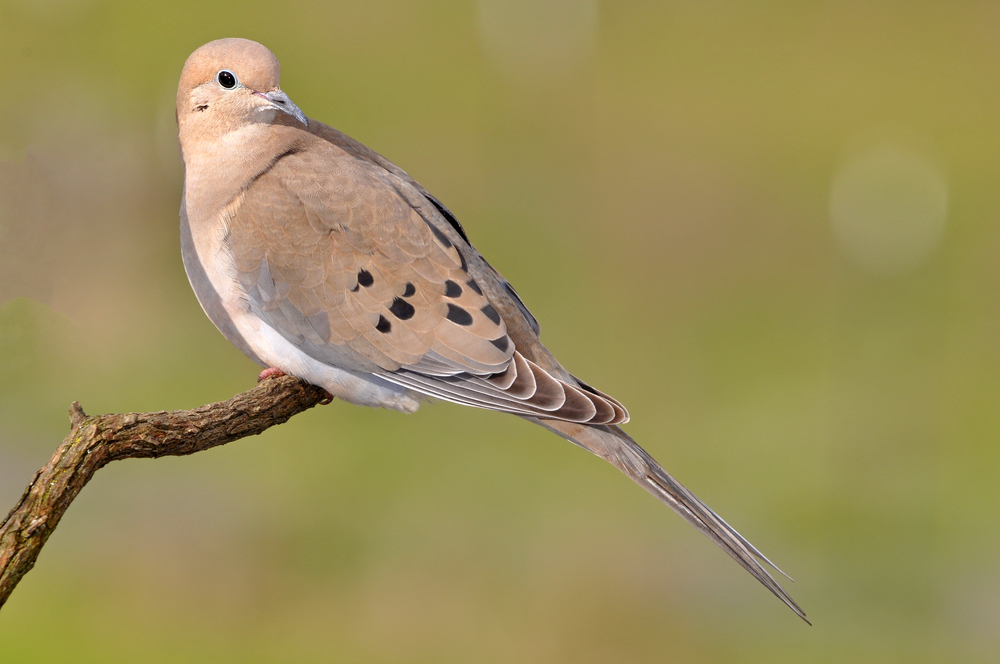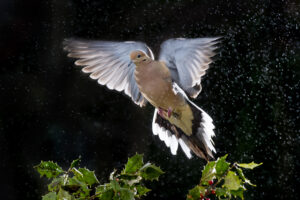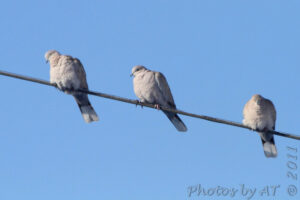Mourning Dove, Zenaida macroura
Bill Rowe
It’s January, so spring must be on the way; just check with the birds. The very first sign of lengthening days, and the nesting season to come, is the resumption of singing by many of our resident birds, like cardinals, House Finches, Song Sparrows—and Mourning Doves, whose soft cooing song can be heard right now on clear mornings. This is our best-known and commonest dove continent-wide, with a range covering southern Canada, the whole United States, Mexico, and (in winter) Central America. A fairly close relative was the forest-dwelling Passenger Pigeon, one of only seven American birds to go extinct since European settlement, despite its once-phenomenal numbers. The Mourning Dove, on the contrary, has thrived in the modern era and is an everyday sight, whether rocketing across cornfields, puttering around in a city park, or building its simple stick nest in a tree or bush (sometimes multiple times in a year). It’s important to note that the support of hunters (including dove hunters) often lies behind the purchase and designation of Conservation Areas. These are of tremendous value in preserving natural habitats and providing more places to observe and photograph birds and other wildlife. Mourning Doves are among the most widely hunted of all wild game, but due to thoughtful controls on when and where this is allowed, their population remains high.
IDENTIFICATION: Even at a distance or in silhouette, when their overall tan color isn’t apparent, Mourning Doves can be spotted by their shape, with small heads and long white-bordered tails that taper to a point—an easy mark to see when they are sitting on wires. The only bird that resembles them at all closely is a recent immigrant, the Eurasian Collared-Dove, often seen in towns and cities. Collared-doves are slightly larger and sandy gray, with a black collar around the hindneck and a non-tapered, blunt-tipped tail (see photo below, right).
ST. LOUIS STATUS: Common all over and year-round in countryside, parks, and neighborhoods. May come to your yard and feed on the seed that falls below your feeder.
Learn more and listen to the songs and calls of Mourning Doves here.
Mourning Dove in flight;
notice tail pattern
Eurasian Collared-Doves
Photo Credit: Al Smith






